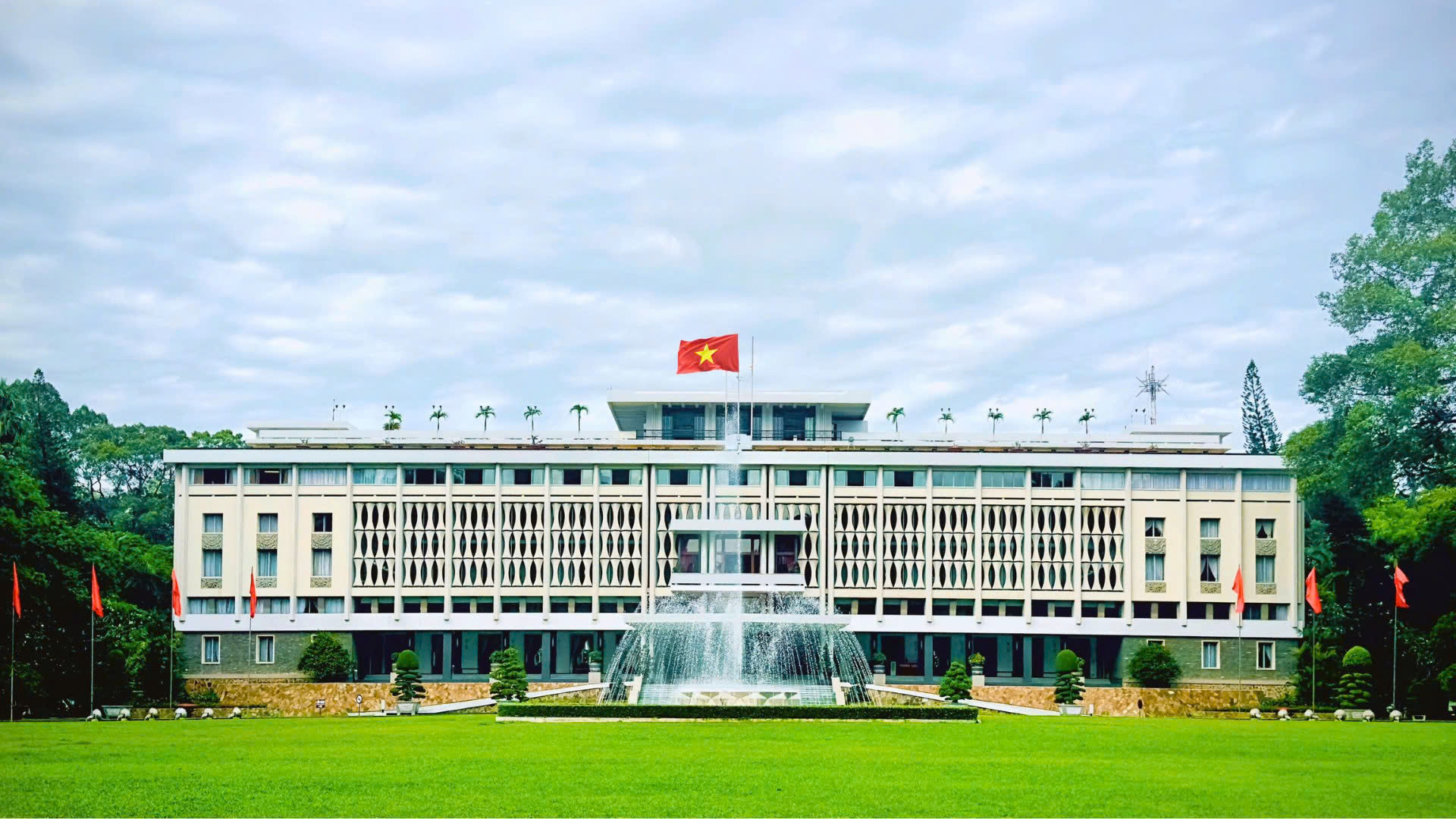In 1858, French naval forces opened fire on Da Nang, launching an invasion of Vietnam. By 1867, the French had occupied the South’s six provinces (Bien Hoa, Gia Dinh, Dinh Tuong, Vinh Long, An Giang, Ha Tien). The following year, French authorities selected a location in the center of Saigon (the present site of the Independence Palace) to build a residence for the Governor-General of Indochina. The palace was known as Norodom Palace.
With the first stone laid by Governor-General La Grandière, construction began on February 23, 1868 and was completed in 1871. It was the Governor-General’s palace in Indochina between 1871-1887. Throughout the period 1887-1945 many French Governor-Generals used it as both residence and working place.

On March 9, 1945, Japanese forces overthrew the French and took sole control of Indochina. Norodom Palace became the headquarters for Japanese in Vietnam.
In September 1945, with the defeat of the Japanese in the World War II, the French returned to occupy the southern Vietnam. Once again, Norodom Palace was made the French regime’s headquarters in Vietnam.
On May 7, 1954, the French was defeated at Điện Biên Phủ, had to sign the Geneva Accords and withdrew from Vietnam. The United States jumped into the fray in an effort to occupy the South. Thus, Vietnam was temporarily divided into 2 regions: the North under the direction of the Democratic Republic of Vietnam and the South under the State of Vietnam.
On September 7, 1954, Norodom Palace was handed over by France’s representative – General Paul Ely – to the Saigon regime representative – Prime Minister Ngo Dinh Diem. Diem decided to rename the site the Independence Palace. A year later, on October 26, 1955, Diệm deposed the head of state, Bảo Đại, and established the Republic of Vietnam (RVN) and assumed the presidency. The Independence Palace became the residence of Ngo Dinh Diem’s family and witness to many political events. Ngo Dinh Diem maintained a family-led dictatorship, pushing people into strategic hamlets and executing Law 10/59. This both caused indignation among the people as well as discord within the Saigon Cabinet.

On February 27, 1962, two army of the republic of Vietnam pilots, Nguyen Van Cu and Pham Phu Quoc, flying two Douglas Skyraiders bombed the Independence Palace as a part of a coup effort. Though a failure, the attempt resulted in massive damage to the Palace’s left section. Unsalvageable, Ngo Dinh Diem ordered a new Palace built using a design by the celebrated architect Ngo Viet Thu, the first Vietnamese to ever win the prestigious Grand Prix de Rome.
Construction began on July 1, 1962. During construction, President Ngo Dinh Diem took up residence at Gia Long Palace (now the Ho Chi Minh City Museum) until his assassination on November 2, 1963. On October 31, 1966, Generals Nguyen Van Thieu and Nguyen Cao Ky, as leaders of Republic of Vietnam Government (RVN), presided over the Palace’s inauguration ceremony. In 1967, as president of the Second Republic of Vietnam, President Thieu made the Independence Palace his residence and working place from 1967-1975.


According to the historic Ho Chi Minh Campaign, the last target of the Vietnamese Liberation Army was the Independence Palace, headquarters of the RVN Government. At 10:45 A.M. on April 30, 1975, tank 843, commanded by Lieutenant Bui Quang Than, smashed through the auxiliary gate of the Palace. Shortly thereafter, Tank 390 – under the direction of Lieutenant Vu Dang Toan – flattened the main gate and advanced on the Palace. At 11:30 A.M., Lieutenant Bui Quang Than ran to the roof, lowered the flag of the Republic of South Vietnam and raised the standard of the National Liberation Front (NLF), ending thirty years of war. At that moment, Saigon Radio broadcast RVN President Duong Van Minh’s declaration of unconditional surrender and transfer of power to the Provisional Revolutionary Government. The spring victory of 1975 was followed by the consultative conference for national reunification. The conference was held at the Independence Palace.

Today, the Independence Palace is a popular historical site in Ho Chi Minh City with both foreign and domestic visitors. It also continues to be used for Government meetings and receptions.
More information about Norodom Palace Click here
